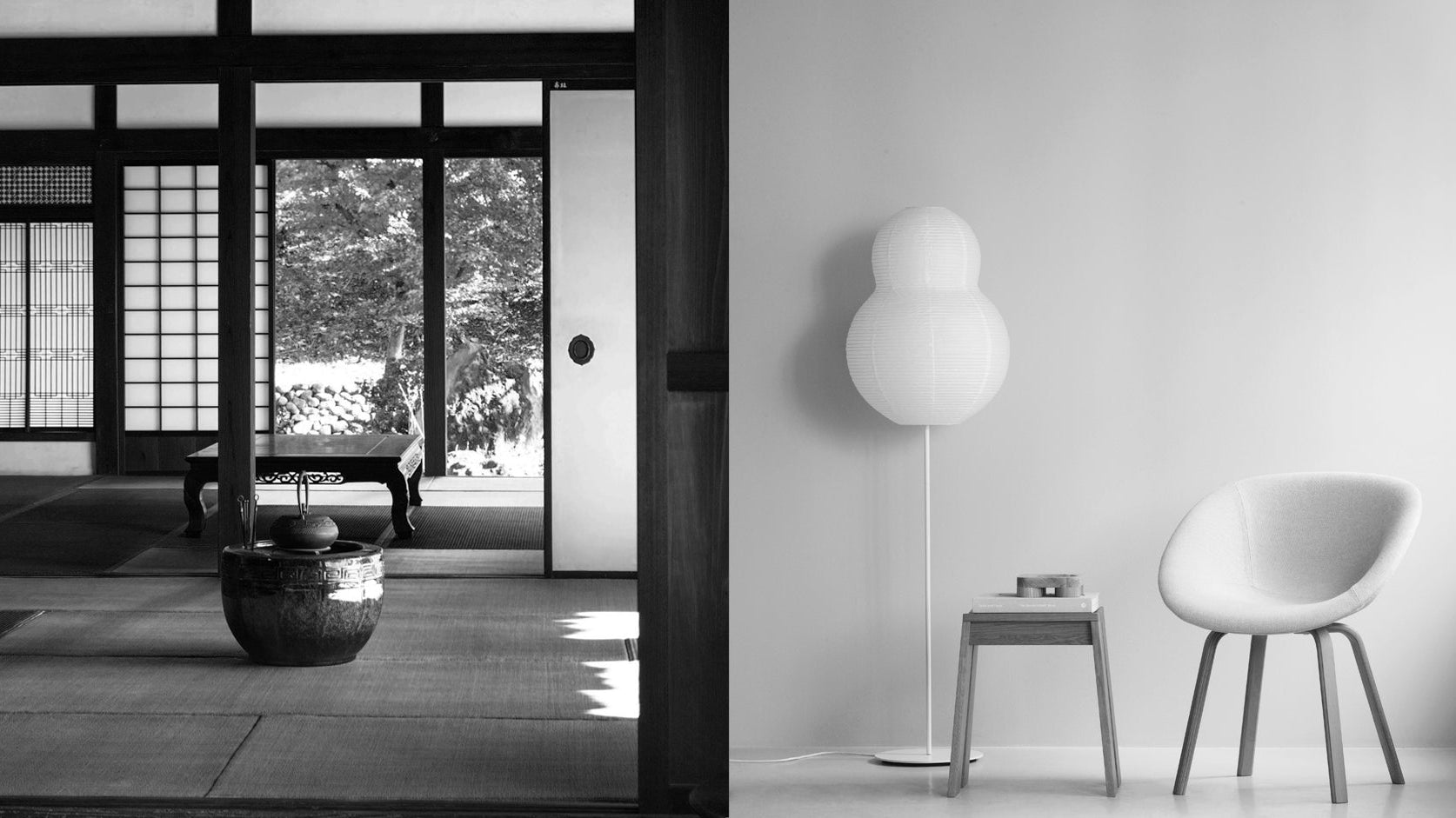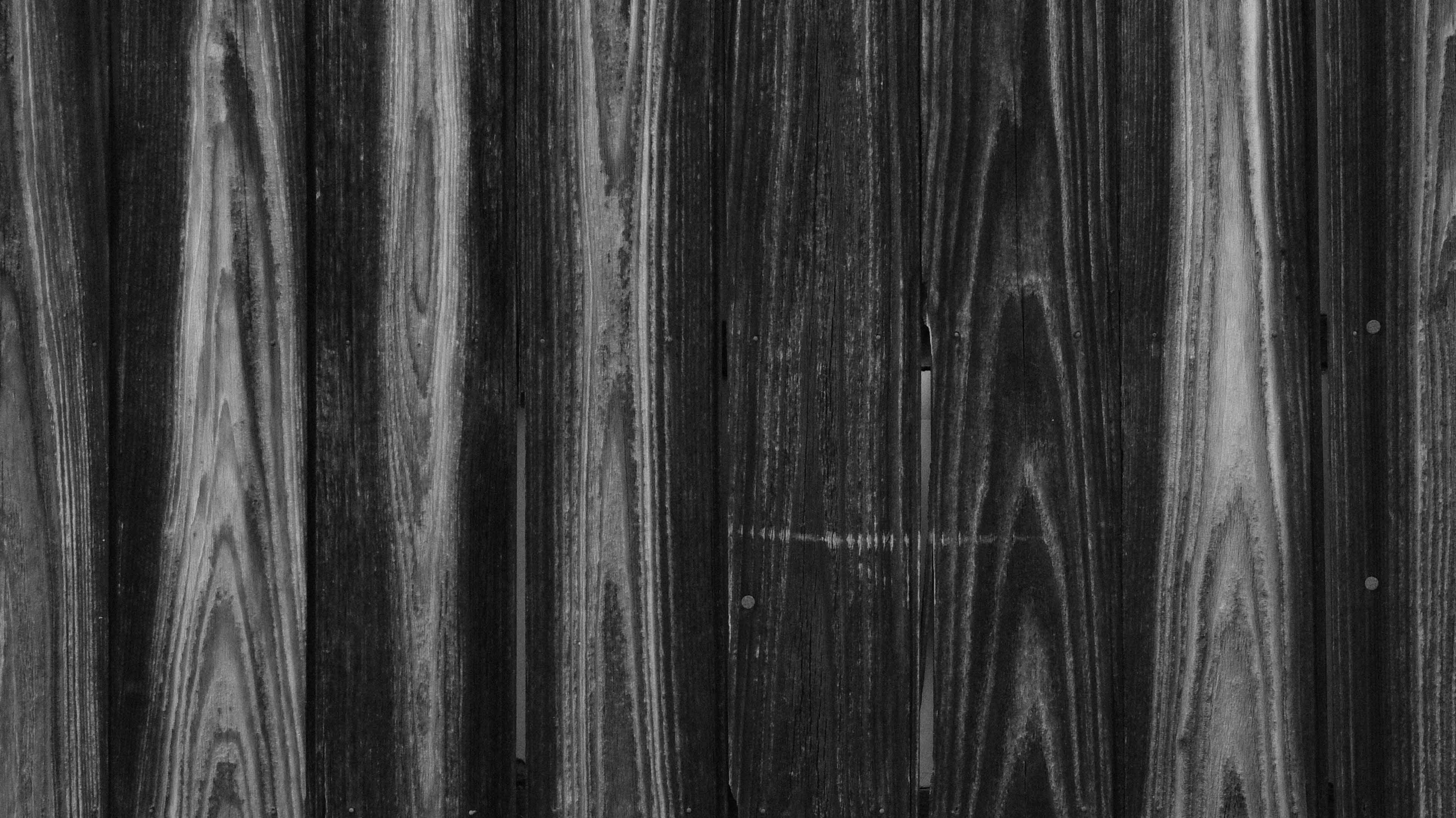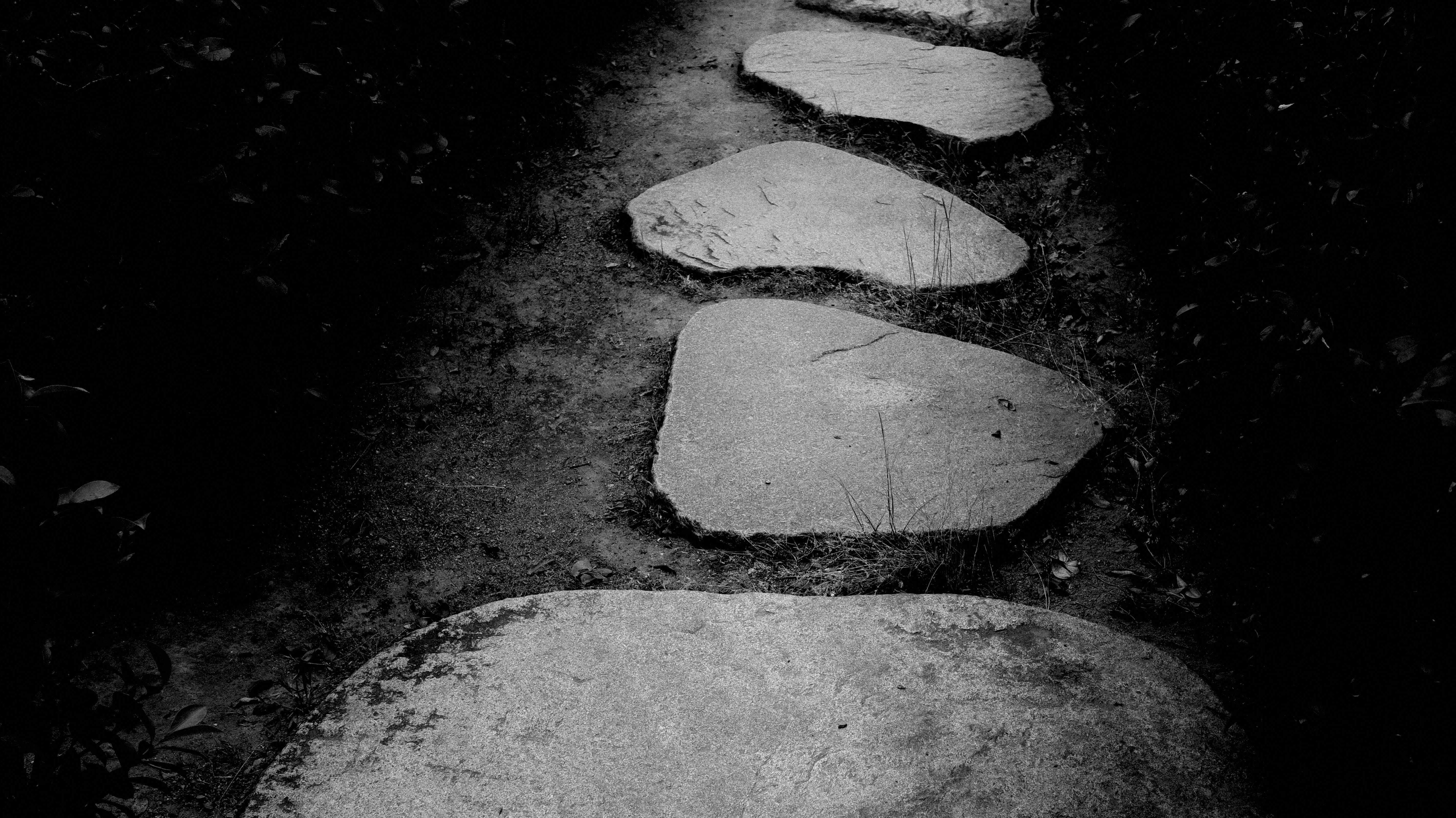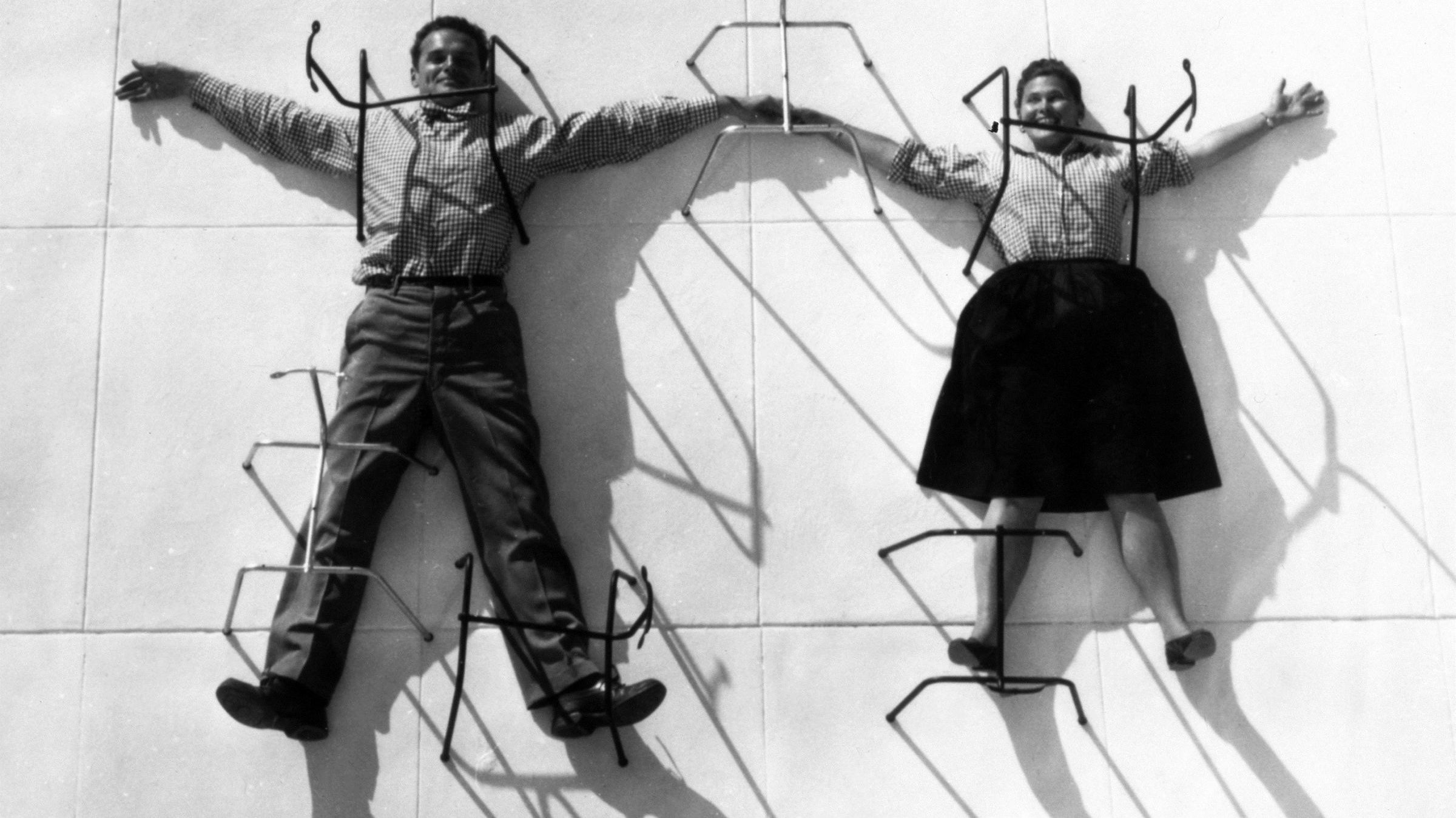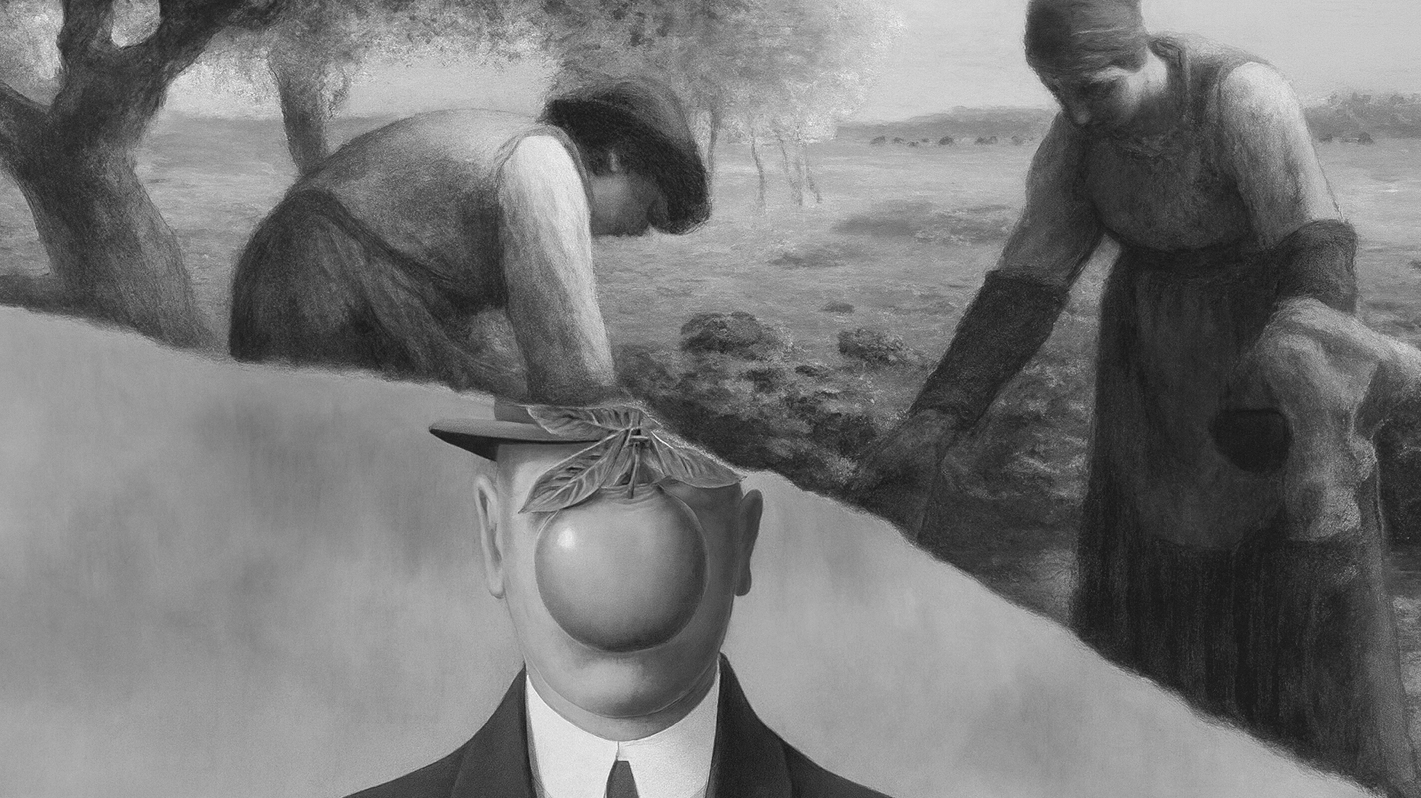
Marina Abramović and ULAY, Relation in Time, 1977-2010
(What is Contemporary Art? Definition, Characteristics and Artists - dans le gris)
What is Contemporary Art?
Contemporary art, often referred to as "the art of the present day," we could also say that contemporary art is art made today by living artists. Contemporary art generally defines the art produced after the modern art movement to the present day. However, it's important to note that contemporary artwork is not confined to a specific time frame. Many art historians consider the late 1960s or early 1970s, marking the end of modernism, as a suitable starting point.
Numerous experts have sought to trace the origins of contemporary art, aiming to understand the rapidly changing context in which contemporary artists began their creative journeys. One prevailing theory highlights 1989 as a pivotal moment in history, marked by the fall of the Berlin Wall and the Tiananmen Square protests. In the following decades, we witnessed a surge in new forms of digital media and telecommunications, leading to a radical globalization that expedited the flow of goods, information, and people across nations.
The genre of contemporary art has its own approach or style that distinguishes it from others. Contemporary art reflects the complex issues that shape our diverse, global, and rapidly changing world. Through contemporary art, many contemporary artists are exploring personal or cultural identity, criticising social and institutional structures, or even attempting to redefine art itself. Therefore, contemporary art is difficult to define because it includes such a variety and it can be more difficult to precisely describe than any other genre of art. Some people think that the basic approach and aim of contemporary art is to contest the nature of the work itself. It can also lead the audience to ask themselves what it is that defines art.
(What is Contemporary Art? Definition, Characteristics and Artists - dans le gris)
(What is Contemporary Art? Definition, Characteristics and Artists - dans le gris)
Contemporary art is a dynamic amalgamation of materials, concepts, methods, and topics that challenge traditional boundaries, defying easy comprehension or definition. It's worth noting that, while contemporary art boldly breaks with many traditions, some individuals perceive it as lacking a distinct, uniform structure or principle. Unlike more traditional art movements with well-defined characteristics and principles, some critics argue that this perceived absence may pose challenges in defining or categorizing the movement. Nevertheless, there are some common characteristics shared by contemporary art as a whole. Below, let's explore the characteristics of contemporary art.
(What is Contemporary Art: Definition, Characteristics, and Artists - dans le gris)
Characteristics of Contemporary Art:
1. Diversity
Contemporary art spans a broad spectrum of styles and aesthetics, where artists can find inspiration in traditional art forms or venture into entirely novel and inventive approaches. This variety fosters the coexistence of abstract, figurative, conceptual, minimalist, and maximalist expressions, among numerous others.
Not only in styles and aesthetics but also in mediums, contemporary art transcends traditional boundaries and conventional artistic materials. Contemporary artists enjoy a vast array of choices when it comes to materials, sources, and styles for their art. Drawing inspiration from a multitude of cultures and experiences, contemporary artists break down geographical and cultural barriers, resulting in a more diverse and enriched artistic landscape.
The ever-changing and dynamic nature of contemporary art manifests through its diversity, spanning various dimensions such as stylistic approaches, cultural influences, artistic mediums, global perspectives, and conceptual frameworks. This multifaceted diversity not only enriches the contemporary art landscape but also stimulates innovation and fosters meaningful dialogue within the art community and beyond.
(What is Contemporary Art: Definition, Characteristics, and Artists - dans le gris)
2. Reflect on Society
Contemporary art doesn't follow a single, fixed goal or viewpoint; instead, it thrives on being diverse, open to interpretation, and full of contradictions. Contemporary artists explore various aspects of identity – personal, cultural, gender-related, or evolving. They examine how we discover and express ourselves, and how society shapes who we are. These themes cover a wide range, from identity to communities, nationalities, today's society, the environment, and what it means to be human.
Contemporary art commonly serves as a mirror to society, with artists regularly delving into social, political, cultural, and environmental matters. Contemporary artists use their creations to offer commentary, critique, or explore various issues. Utilizing diverse mediums and styles, they capture the zeitgeist, addressing current events, societal norms, and the human experience. That is why contemporary art is often referred to as "the art of the present day" – it encapsulates what is happening right now in the ever-changing world around us. Reflecting the multifaceted, ever-changing world as it evolves, contemporary art will continue to serve as a vivid and dynamic reflection of our shared human experience.
(What is Contemporary Art: Definition, Characteristics, and Artists - dans le gris)
3. Multimedia Approaches
One characteristic of contemporary art is its diversity, which extends to the integration of various artistic mediums and technologies, creating a rich and interactive artistic experience. Contemporary artists frequently blend different mediums and technologies, including video, performance, installations, and digital media, to craft immersive and multidimensional experiences. While there is no single, definitive style or approach that contemporary artists adhere to, they are united by a shared commitment to experimentation and innovation.
(What is Contemporary Art: Definition, Characteristics, and Artists - dans le gris) 
Ryoji Ikeda: data-verse 2 (2019). Photo: Tuomas Uusheimo / Amos Rex
(What is Contemporary Art: Definition, Characteristics, and Artists - dans le gris)
Contemporary art often embraces abstract, experimental, and process-based forms, frequently incorporating new media like photography, video, and computer-generated imagery, thereby pushing the boundaries of artistic expression. Moreover, contemporary artists frequently collaborate with professionals from diverse fields, such as scientists, engineers, programmers, and designers. These collaborations result in innovative and cross-disciplinary artworks that seamlessly merge art with science, technology, and various other domains.
(What is Contemporary Art: Definition, Characteristics, and Artists - dans le gris)
4. Conceptual Focus
During the 1960s and 1970s, conceptual art rose to prominence by shifting the focus from aesthetic or technical aspects to the ideas and concepts behind the artwork. This movement highlighted the significance of the artist’s intention and the viewer's interpretation.
Building on this foundation, contemporary art emphasizes intellectual exploration and the underlying meanings of artworks, often prioritizing these over traditional aesthetics. The creative process itself becomes as important as the final product, inviting strong intellectual or philosophical themes. Consequently, contemporary art often encourages viewer engagement and participation, integrating the audience into the artwork and making them an integral part of the artistic experience.
Contemporary artists believe that ideas are more important than craftsmanship, prioritizing the conceptual aspect of their work. This shift challenges conventional ideas about artistic expertise. Moreover, the conceptual focus often allows for multiple interpretations, encouraging viewers to bring their own perspectives and experiences to the artwork, contributing to a diverse range of meanings and understandings.
(What is Contemporary Art: Definition, Characteristics, and Artists - dans le gris)
5. Continuous Evolution
Contemporary art is perceived as a continuous evolution, reshaping the very essence of what we consider art. It defies rigidity, eschewing a single, unchanging style or approach. Instead, it thrives on the fast-paced evolution of our world, eagerly embracing new technologies and emerging ideas. Moreover, contemporary art benefits from increased global connectivity. Artists of diverse cultures and backgrounds can readily exchange and influence one another, fostering a dynamic interchange of ideas and perspectives that enriches the ongoing evolution of artistic expression.
Contemporary art does not settle for simply mirroring the current status quo. It challenges the very foundations of traditional art, inviting viewers to question and reimagine their preconceived notions of what art can be. By doing so, it ensures that art remains a dynamic, ever-evolving force, continually pushing boundaries and redefining the artistic landscape of our time. In this way, contemporary art remains at the forefront of "Redefining Art."
(What is Contemporary Art: Definition, Characteristics, and Artists - dans le gris)
Contemporary Artists and Artworks Examples
1. Yayoi Kusama
(What is Contemporary Art: Definition, Characteristics, and Artists - dans le gris)

Yayoi Kusama, Flower XL, 1993
Yayoi Kusama is a Japanese contemporary artist who primarily works in sculpture and installation while also being involved in painting, performance, fashion, design, and various other artistic endeavors. Her work is rooted in conceptual art and exhibits characteristics of feminism, minimalism, surrealism, pop art, and abstract expressionism. Her extensive body of work delves into themes of sexuality, freedom, and her lifelong struggle with obsessive-compulsive disorder, firmly establishing her as a prominent figure in the contemporary art world.
(What is Contemporary Art: Definition, Characteristics, and Artists - dans le gris)
2. Jeff Koons
Jeff Koons is among America's most celebrated contemporary artists. His Neo-Pop aesthetics and clever use of consumer objects demonstrate a deep respect for popular culture. As Koons himself has explained, "I try to create work that doesn't make viewers feel they're being spoken down to, so they feel open participation." His striking paintings and monumental sculptures, which reflect contemporary culture, empower the viewer, as he suggests, to attain a state of personal transcendence.
(What is Contemporary Art: Definition, Characteristics, and Artists - dans le gris)

Jeff Koons, Rabbit, 1986
(What is Contemporary Art: Definition, Characteristics, and Artists - dans le gris)
In 1986, Jeff Koons crafted the highly iconic sculpture "Rabbit," a stainless steel artwork that stands as a testament to his adept fusion of popular culture and contemporary art. This mirror-polished representation of a rabbit not only showcases Koons' ability to transform everyday objects into artistic statements but also serves as a reflection—both literally and metaphorically—of the viewer. The mirrored surface not only captures the observer's image but, in its distortion, invites an engaging and interactive encounter. This element elevates "Rabbit" beyond traditional sculpture, transforming spectators into integral participants in a unique reflective experience.
(What is Contemporary Art: Definition, Characteristics, and Artists - dans le gris)
3. Ai Weiwei
Ai Weiwei is a Chinese contemporary artist, documentarian, and activist. Ai is famous for conceptual artworks that challenge authority and explore the links between the contemporary world and traditional Chinese culture. As an activist, he has publicly criticized the Chinese Government's stance on democracy and human rights. His photographs, sculptures, films, performances, and installations have irritated the Chinese government. Urns are frequent motifs in Ai's practice, which often comments on mass consumption, individuality, censorship and interconnections between contemporary cultures.
(What is Contemporary Art: Definition, Characteristics, and Artists - dans le gris)

Ai Weiwei, Dropping a Han Dynasty Urn, 1995
(What is Contemporary Art: Definition, Characteristics, and Artists - dans le gris)
"Dropping a Han Dynasty Urn," a controversial artwork conceived by Chinese contemporary artist Ai Weiwei in 1995, blends what Ai has termed a "cultural readymade." In this performance piece, Ai Weiwei is deliberately captured in photographs, dropping and shattering a 2,000-year-old Han dynasty urn. The intentional act of breaking this iconic form from a bygone era is, for Ai, tantamount to discarding an entire inheritance of cultural meaning associated with China's history.
This work embodies Ai's role as an artist who actively challenges and seeks to dismantle traditional values, making way for the creation of new ones. However, it has not been without controversy; the destruction of cultural heritage has drawn criticism, as it appears to mirror the widespread loss of historical artifacts during China's Cultural Revolution. Ai's contemporary artwork, in this context, can be viewed as a critique of the structural interrelation between power and cultural value. It highlights how the perceived importance of cultural heritage and the value assigned to the past can shift based on the perspectives of those in authority at any given time.
(What is Contemporary Art: Definition, Characteristics, and Artists - dans le gris)
4. Damien Hirst
(What is Contemporary Art: Definition, Characteristics, and Artists - dans le gris)

Damien Hirst, The Severed Head of Medusa, 2008
(What is Contemporary Art: Definition, Characteristics, and Artists - dans le gris)
Damien Hirst is an English contemporary artist, entrepreneur, and art collector. He is reputed to be the wealthiest living artist in the United Kingdom. The primary themes of his artworks center on death, rebirth, immortality, and beauty. Hirst employs ready-made objects to challenge the role of art in modern culture. His influence persists, inspiring contemporary artists and solidifying his position as a key figure in the evolution of the contemporary art world.
(What is Contemporary Art: Definition, Characteristics, and Artists - dans le gris)
5. Louise Bourgeois
Louise Bourgeois is a prominent figure in modern and contemporary art. She is primarily recognized for her large-scale sculptures and installations, which draw inspiration from her own memories and life experiences. These themes are deeply rooted in events from her childhood, which she considered a therapeutic process. While Bourgeois exhibited alongside the abstract expressionists and her work shares similarities with surrealism and feminist art, she was not formally associated with any specific artistic movement.
(What is Contemporary Art: Definition, Characteristics, and Artists - dans le gris) 
Louise Bourgeois pictured with the steel version of Spider IV, (1996).
(What is Contemporary Art: Definition, Characteristics, and Artists - dans le gris)
During the last decades of her life, Louise Bourgeois prominently featured the spider as the central protagonist in her art. For the artist, the spider held deep associations with a maternal figure, its symbolism rooted in personal significance. The "Spider" series, in particular, became a poignant homage to her own mother, who passed away when Bourgeois was just 21. From drawings to large-scale installations, Bourgeois's spiders manifest as both looming and powerful protectresses, while paradoxically exuding a delicate vulnerability. Among the most celebrated pieces in this series is "Maman," a towering spider sculpture that has garnered international attention through exhibitions in various locations around the world.
(What is Contemporary Art: Definition, Characteristics, and Artists - dans le gris)
6. Richard Serra
Richard Serra, the American contemporary sculptor best known for his large-scale abstract steel sculptures, compels viewers to engage with the physical attributes of his works and their specific locations due to their substantial presence. In alignment with fellow minimalists from his era, Serra avoids the use of art as metaphor or symbol, advocating instead for sculpture as a phenomenological encounter involving weight, gravity, space, process, and time. Yet, his sculptures still evoke a sense of the sublime through their sheer scale and materiality.
(What is Contemporary Art: Definition, Characteristics, and Artists - dans le gris)

Installation view of the exhibition "Richard Serra Sculpture: Forty Years"
(What is Contemporary Art: Definition, Characteristics, and Artists - dans le gris)
7. Cindy Sherman
Cindy Sherman is an American contemporary artist known for her groundbreaking work in photography, particularly her conceptual self-portraits. Born on January 19, 1954, in Glen Ridge, New Jersey, Sherman has explored deeply the construction of identity, manipulating visual and cultural conventions related to art, celebrity, gender, and photography. Today, she stands as one of the most influential and recognized figures in contemporary art.
(What is Contemporary Art: Definition, Characteristics, and Artists - dans le gris)

Cindy Sherman, Untitled Film Still #3, 1977
(What is Contemporary Art: Definition, Characteristics, and Artists - dans le gris)
One of Sherman's most iconic series is the "Untitled Film Stills" (1977-1980), in which she posed as different female characters in scenarios reminiscent of 1950s and 1960s Hollywood and film noir. These images represent clichés or feminine types "that are deeply embedded in the cultural imagination," questioning the representation of women in media.
(What is Contemporary Art: Definition, Characteristics, and Artists - dans le gris)
8. Chiharu Shiota
Chiharu Shiota is a Japanese contemporary artist known for her immersive and intricate installations that often interweave materiality and the psychic perception of space to explore ideas around the body and flesh, engaging with personal narratives that delve into memory, territory, and alienation. Shiota's large-scale and occasionally performative web installations are composed of thousands of black, red, or white threads carefully strung together throughout entire spaces. These installations are often embedded with common or personal objects that convey and address "the presence in absence."
(What is Contemporary Art: Definition, Characteristics, and Artists - dans le gris)

Chiharu Shiota, State of Being (Children's Dress), 2006
(What is Contemporary Art: Definition, Characteristics, and Artists - dans le gris)
9. Gerhard Richter
Gerhard Richter is a German visual artist widely regarded as one of the most important contemporary painters. His career has spanned several decades, and his diverse body of work includes various styles and approaches, ranging from photorealism to abstraction, along with photographs and glass pieces. Richter is widely recognized as one of the most important contemporary German artists, and several of his works have set record prices at auction.
(What is Contemporary Art: Definition, Characteristics, and Artists - dans le gris)

Gerhard Richter, Grau, 2006
(What is Contemporary Art: Definition, Characteristics, and Artists - dans le gris)
Richter's "Grau" (2006) is a series of paintings where grey is applied unevenly on paper or aluminum. Although grey is often perceived as an expressionless color, Richter has incorporated it into his works since the mid-1960s. These paintings defy the monochrome label as the colors of the underlying layer subtly emerge through the grey. Depending on the material and the oil's intensity, the paint slides, adheres, creates ripples, forms a thick coating, congeals, or drips and spreads across the surface.
(What is Contemporary Art: Definition, Characteristics, and Artists - dans le gris)
10. Haegue Yang
Haegue Yang, a South Korean contemporary artist renowned for her work in sculpture and installation, has achieved notable recognition. She stands as the first female Asian artist to be honored with the prestigious Wolfgang Hahn Prize and has received the Republic of Korea Culture and Arts Award (Presidential Citation) in the visual arts category. Yang's artistic spectrum extends from classical sculpture to minimalism.
(What is Contemporary Art: Definition, Characteristics, and Artists - dans le gris)

Haegue Yang, Hardware Store Collage - Bauhaus Toilet Seats #1
(What is Contemporary Art: Definition, Characteristics, and Artists - dans le gris)
In her creative endeavors, Yang strives to communicate beyond the constraints of language, embracing a primordial and visual language. She enriches her visual abstraction with sensory experiences, incorporating elements such as scent, sound, light, and tactility. Moreover, Yang employs everyday objects as powerful conduits for conveying socio-political messages, prompting reflections on identity, and delving into the theme of isolation.
(What is Contemporary Art: Definition, Characteristics, and Artists - dans le gris)
Modern Art vs. Contemporary Art: What's the Difference?
In art, modern and contemporary forms are often thought to be interchangeable, but they are distinct. Many people use the term "modern" to describe recent art, but technically, this art is considered contemporary.
Due to the experimental nature and overlapping themes of both modern and contemporary art, the genres are often confused for one another. But actually the answer is really simple, you only have to distinguish with time. Modern art and contemporary art are from two different time periods. Modern art came before contemporary art. Modern art refers to art created from the 1860s up to the 1970s. While modern art is more recent than the Renaissance or classical art periods, it is by no means current. Whereas, contemporary art means art made in the present day. Usually, those still living and creating artworks or those who have only very recently died or retired. Today’s contemporary artists are more experimental with their mediums.
Both modern and contemporary art can be characterized as revolutionary, however, Contemporary art emphasizes innovation and freedom more than modern art. It is also liberty to experiment with all styles. Contemporary art focuses on societal influence, with society as the major focus, whereas modern art is an embodiment of individuality. Modern artists tend to find the pure idea of art.
• Further Reading: 3 Main Differences Between Modern Art & Contemporary Art
(What is Contemporary Art: Definition, Characteristics, and Artists - dans le gris)
Recommended Reading on Contemporary Art
(What is Contemporary Art: Definition, Characteristics, and Artists - dans le gris)
Before we conclude our article on contemporary art, we hope you’ve gained a deeper understanding of the subject. If you’re interested in learning more, we've curated a collection of recommended books below.

Tony Godfrey's The Story of Contemporary Art is a vibrant introduction to contemporary art, exploring everything from Andy Warhol's iconic Brillo boxes and Marina Abramović's groundbreaking performance art to today's biennale circuit and million-dollar auctions. This book addresses the pressing questions often posed by viewers of contemporary art: "What does it mean?", "Is it truly art?", and "Why is it so expensive?" (Shop Now)
Contemporary Painting

This comprehensive international survey by renowned critic and art historian Suzanne Hudson showcases the dynamic world of contemporary painting, featuring over 250 prominent artists whose works define the painting of our time. The 20th century saw radical shifts in art, from modernism to postmodernism, sparking intense debates about painting’s place in contemporary culture. Contemporary Painting argues that this medium has not only endured into the 21st century but has also thrived, adapting to the evolving landscapes of art, technology, politics, and society. (Shop Now)
Vitamin C+: Collage in Contemporary Art

Collage, an artistic language of found images, fragmented forms, and unexpected juxtapositions, rose to prominence in the early 20th century. Recently, this art form has experienced a resurgence in contemporary art, with a new wave of artists embracing its dynamic and experimental approach to image-making.
Vitamin C+ is organized alphabetically by artist and includes both renowned collagists like Njideka Akunyili Crosby, Ellen Gallagher, and Mickalene Thomas, as well as emerging talents deserving of greater attention. Expanding the definition of collage, this book features analog cut-and-paste compositions, photomontages, digitally composed imagery, and animations, showcasing the medium’s versatility in contemporary art. (Shop Now)
How Photography Became Contemporary Art: Inside an Artistic Revolution from Pop to the Digital Age

When Andy Grundberg arrived in New York in the early 1970s as a budding writer, photography was a marginal player in the contemporary art world. By 1991, when he left his role as critic for the New York Times, photography had become central to the discourse of contemporary art. In this acclaimed book, Grundberg explores photography’s "boom years," detailing its growing influence across major art movements such as Earth Art, Conceptual Art, performance, and video. (Shop Now)
(What is Contemporary Art: Definition, Characteristics, and Artists - dans le gris)
Read More Art Articles:
• What is Modern Art? A Complete Definition and Guide
• What is Performance Art? From Concept to Action
• Minimalism in Art: Definition, Characteristics and Artists
• 3 Main Differences Between Modern Art & Contemporary Art
(What is Contemporary Art: Definition, Characteristics, and Artists - dans le gris)
About Us
Dans Le Gris is a brand that began with everyday jewelry, with each handmade piece designed and crafted in Taiwan. We deeply value every detail, dedicating ourselves to creating timeless pieces through collaboration with experienced craftsmen.
In our journal, we provide irregular updates featuring articles about art, culture, and design. Our curated content encompasses diverse aspects of life, with the aspiration to offer meaningful insights and inspiration.

